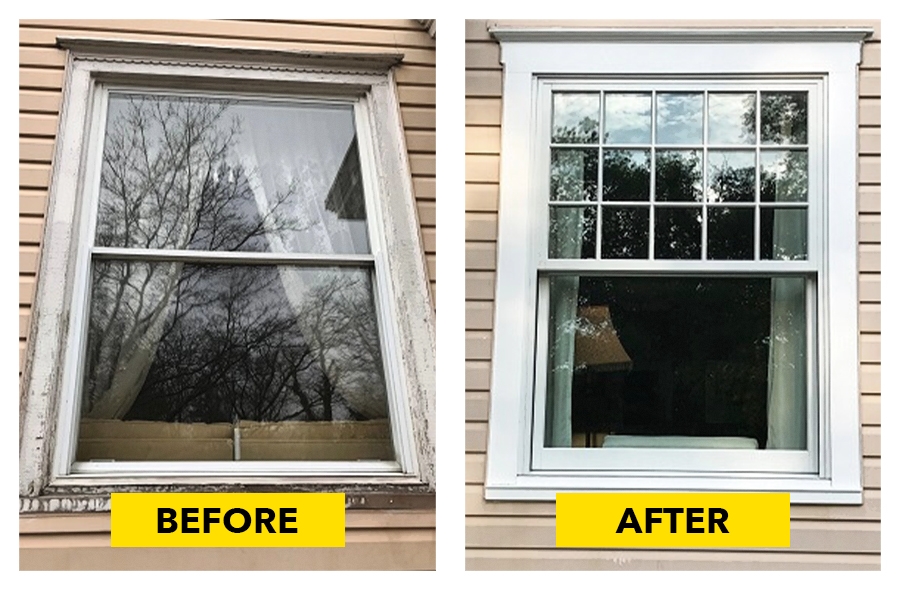Old single-pane windows allow cold air into the home, increasing your heating costs and adding to your carbon footprint. Mold and mildew also thrive in damp areas around the window, posing a health risk to those suffering from asthma and other respiratory conditions.
Replacing inefficient old windows with new ones that feature argon gas and low-emissivity glass will help reduce energy costs and keep your home more comfortable.
Single-Pane Glass
Single pane windows are a classic look that many homeowners like in their homes. They can provide a nice aesthetic that complements any design style. They also offer a cost-effective option for building owners and architects. However, they have a few drawbacks that can affect energy efficiency and the resale value of the home.
Single-pane windows are poor insulators, which can cause drafts and lead to higher energy bills. Additionally, they don’t help obstruct outside noises, which can be an issue for people living in urban areas.
However, there are some cases where keeping single-pane windows makes sense. For instance, if you have historic windows that were original to the house, they can add value and maintain the authenticity of the architectural features. Moreover, older windows with hand crafted glass can have a unique look that’s hard to replicate. Additionally, if the windows are in good condition, it might be more cost-effective to repair them than replace them.
Leaky Seals
A small amount of condensation between a double-pane window is normal, but if you notice glass distortion (like the windows collapsing slightly in the middle) or excessive moisture inside your home, it’s time to consider replacement. Moisture between the panes of your insulated glass unit allows for air leakage, which undermines energy efficiency and creates a welcoming environment for mold and mildew.
Leaks from your windows can also let outside noise in, especially when the seal fails between the panes of a double-pane window. The loud sounds of neighbors’ barking dogs and revving lawnmowers can make you feel uncomfortable in your own home.
Some companies offer defogging services to manage this problem, but the results and costs of this type of repair are mixed. Replacing your old windows with a new, sealed glazing unit will be more expensive upfront, but it can pay for itself in energy savings over the years. Plus, modern replacement windows are designed with sound reduction in mind.
Weatherstripping
Old windows that leak energy can wreak havoc on your home’s air conditioning systems, driving them into overdrive and draining your bank account with escalating electricity bills. If your existing windows are showing signs of sealant damage or cracking, replacing them with modern window glass and a new layer of weatherstripping will make a big difference in your home’s efficiency.
If you choose to replace your old windows, it’s important to use the best quality products possible to ensure a long and trouble-free lifespan for your new units. Energy assessments that include thermographic scans, blower door tests and air infiltration measurement will help you determine the best options for your home.
To help seal your new windows, apply a thin strip of V-strip or compression weatherstripping along the sides and top of the window sash. You may need to remove the window stop and sash to do this, but it’s easy enough for DIYers. Choose vinyl or rubber for ease of installation and durability.
Frames
The frames of old windows are often in need of replacement. These are the fixed parts of the window frame attached to the studs and sill, and they can be a big source of leaks. Wood frames are especially vulnerable to humidity, but modern materials can provide a similar look with better durability and energy efficiency.
Start by measuring the width of the existing window frame in three places: at the top, middle and bottom of the side jambs. Keep the smallest measurement and use it to guide the purchase of your replacement window.
If you’re using sash-replacement kits, it’s also important to measure the height of your existing window frame and determine whether or not it is square. If the frame isn’t square, your new replacement window won’t fit and could be crooked when installed. This could lead to air leaks and a reduction in your energy savings. Also, take a diagonal measurement from the inside upper left corner to the inside lower right corner of your existing window opening.

